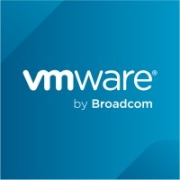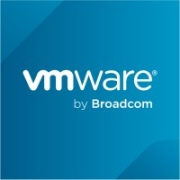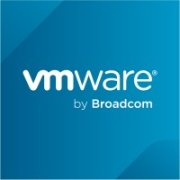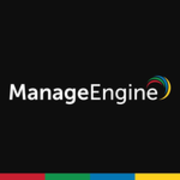Configuration Management ensures consistent performance by managing system settings across the network. It enhances efficiency, reduces downtime, and improves compliance with industry standards.
Configuration Management provides a systematic approach to handle IT resources. This involves tracking all aspects of hardware and software configurations, identifying any discrepancies, and rectifying them efficiently. Effective Configuration Management aids IT teams in maintaining control over infrastructure changes and minimizing potential disruptions. This approach not only complies with regulatory standards but also ensures IT assets are fully optimized and secure from persistent threats.
What features should you consider?In industries such as finance and healthcare, Configuration Management supports stringent compliance and security requirements. These industries benefit from streamlined operations and enhanced data protection capabilities. Implementation usually involves integrating Configuration Management tools with existing IT workflows to improve control and minimize human error.
Organizations seek Configuration Management to streamline operations, enhance overall system reliability, and ensure compliance with regulatory or internal policies. Adapting to industry-specific needs, it optimizes IT infrastructure management, making the organization more agile and secure.
| Product | Market Share (%) |
|---|---|
| Red Hat Ansible Automation Platform | 16.0% |
| Microsoft Configuration Manager | 11.5% |
| AWS Systems Manager | 9.7% |
| Other | 62.8% |














































System misconfiguration may cause a broad array of issues, such as inconsistencies, non-compliance, and poor performance. This affects operations and leaves security gaps that attackers may exploit. By managing the configurations, you ensure that no change can go undocumented.
Software systems consist of an array of components that are different and complex. Each component has its own configuration metadata. Because of the dynamic nature of software environments, every time you add an endpoint, change a password, or add a new hardware resource, there is a change in the configuration. If these updates are not centralized, the configuration can become chaotic.
Another challenge is the different versions of configuration values. If they are not managed, you may end up not knowing which one is the approved current version of the configuration.
Manually monitoring systems, identifying misconfiguration, choosing the remediation steps, and validating changes and versions is time-consuming and complex. But if you don’t keep configuration changes under control, you can end up not knowing which software has been updated, what are the latest changes, etc.
With a configuration management tool, you define the systems settings and then the software constantly monitors and maintains the systems according to those settings. Therefore, you can know the state of your system’s applications at any given moment.
Configuration management (CM) has a critical role in DevOps environments because it helps developers to automate otherwise time-consuming tasks and to increase agility. While configuration management strictly refers to automating, managing, and maintaining configurations at the desired state, most CM tools will also manage system changes by redefining configurations to meet needs.
Configuration data has always been a difficult task to handle, and in the early days of application development it was conducted manually. The arrival of DevOps brought the automation of configuration management in the form of software tools that can monitor, manage, and maintain a system. Automated solutions enable software engineers to act quickly when the software detects a bottleneck or other misconfiguration. It also enables them to manage and provision resources.
Configuration management is also applied to Continuous Integration/Continuous Development (CI/CD) environments. The software uses pull request-based code review to automate the deployment of code changes live. It also helps developers to automate configuration change requests so they can be immediately deployed to a running system.
Agile teams use configuration management tools to simplify tasks like updating SSL certificates, changing passwords, and adding API keys for third-party integrations.
There are three configuration management functions that specifically support DevOps processes:
Configuration management tools help to keep computer systems consistent and stable by managing changes and updates. These tools also monitor and identify potential configuration issues and needs so that IT personnel can apply the necessary remedy or update as soon as possible.
There is an array of configuration tools available in the market, each with its own unique offerings. Still there are common features you should look for when choosing a configuration management tool:
Configuration Management enhances software development efficiency by systematically organizing and controlling changes. By maintaining consistent environments, you streamline development, testing, and deployment processes. Automated Configuration Management reduces manual errors, accelerates releases, and improves collaboration between teams. It allows you to track configurations and manage dependencies, leading to faster issue resolution and a reliable product.
What are the key benefits of integrating Configuration Management with DevOps?Integrating Configuration Management with DevOps ensures a cohesive workflow, improving collaboration between development and operations teams. This integration leads to faster software delivery, consistent environments, and early detection of issues. You benefit from automated deployments, version control, and improved scalability. By aligning these practices, you improve efficiency and maintain high-quality standards throughout the software lifecycle.
How does Configuration Management facilitate compliance and security?Configuration Management plays a critical role in maintaining compliance and security by providing a thorough record of system configurations, changes, and documentation. It helps you identify unauthorized changes and vulnerabilities, ensuring systems adhere to regulatory standards. Automated compliance checks reduce the risk of manual errors and enhance security by keeping systems updated with the latest patches.
What challenges might you face when implementing Configuration Management solutions?Implementing Configuration Management solutions can present challenges such as resistance to change, complexity in existing infrastructure, and resource allocation. You may encounter issues in tool selection and integration with legacy systems. Training your team is crucial for successful adoption. Clear communication, phased implementation, and choosing scalable tools are strategies to overcome these hurdles.
How do you choose the right Configuration Management tool for your organization?Selecting the appropriate Configuration Management tool involves evaluating your organization's specific needs, such as compatibility with existing systems, ease of use, and scalability. You should consider factors like community support, integration capabilities, and cost. Testing tools through proof-of-concept implementations and consulting with stakeholders helps ensure the chosen solution effectively meets your operational goals.